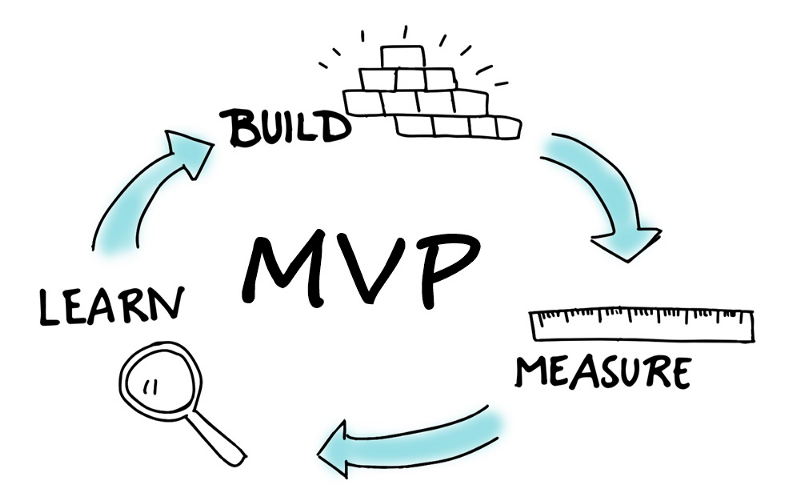How to build your Minimum Viable Product: From idea to building your MVP - Website, app or software?
- Lisa V.

- Apr 8, 2024
- 3 min read
Updated: Apr 9, 2024
Have you ever had an idea but felt unsure about how to build your minimum viable product and determine whether to proceed with an app, website, or software?
This is a question many founders ask themselves, especially if they aren't coming from a technical background (software/product developer).
Turning an idea into a Minimum Viable Product (MVP) involves a series of strategic decisions and actions.
Here's a step-by-step guide to help you navigate from idea conception to MVP development, including considerations for choosing between an app, website, or software:
Clarify Your Idea: Before diving into development, ensure you have a clear understanding of your idea. Define the problem your product solves, its target audience, and its unique value proposition. Conduct market research to validate demand and identify potential competitors.
Identify MVP Features: Determine the core features essential for your MVP. Focus on solving the primary problem efficiently without unnecessary complexity. Prioritize features based on their importance to the user experience and value they provide. Your MVP does not have to be perfect (have all the features you want it to have), but it has to be ready to be used and tested to get feedback and improve its features. Michael Seibel, Group Partner of Y Combinator said "Launch something quickly, and iterate", why is that? You can learn much faster if what you are building is actually useful and help the user accomplish the goal of solving their problem. By having the conversation with users, adapting your product based on their feedback and them seeing your product evolve, you will get them more excited about using your product.
Choose Development Approach: Decide whether to build a native mobile app, a web application, or desktop software based on several factors:
Target Audience: Consider where your target audience spends most of their time online. If they primarily use mobile devices, a mobile app might be more suitable. If they prefer desktop or laptop usage, a web application or software might be better.
Functionality Requirements: Evaluate the complexity and functionality of your product. Mobile apps are ideal for features like push notifications, GPS tracking, and camera integration. Web applications are more versatile and accessible across different devices and platforms. Desktop software offers more robust functionality and can leverage local system resources.
Development Cost and Time: Consider the resources required for development. Mobile app development often requires separate versions for iOS and Android, increasing cost and time. Web applications can be developed faster and are easier to maintain. Desktop software development might require more specialized skills but can offer greater performance and functionality.
4. Prototype and Validate: Create a prototype or mockup of your MVP to visualize its functionality and user interface. Use tools like wireframing software or design prototypes to demonstrate key features. Gather feedback from potential users and stakeholders to validate your concept and iterate on improvements.
5. Develop MVP: Once you've finalized your MVP's features and design, begin development. Focus on implementing the core functionality efficiently while keeping the user experience intuitive and seamless. Consider using agile development methodologies to adapt to changes and prioritize features based on feedback.
6. Test and Iterate: Conduct thorough testing of your MVP to identify bugs, usability issues, and areas for improvement. Gather feedback from early adopters and iterate on your product based on their suggestions. Continuously refine and enhance your MVP to align with user needs and market demand.
7. Launch and Gather Data: Launch your MVP to a select group of users or a wider audience, depending on your strategy. Monitor user engagement, behavior, and feedback to gather valuable data. Use analytics tools to track key metrics and identify areas for optimization.
8. Iterate and Scale: Based on user feedback and data insights, iterate on your MVP to address shortcomings and introduce new features. Gradually scale your product based on demand and market opportunities. Continue refining your product to meet evolving user needs and stay competitive in the market.
By following these steps and considering the factors mentioned, you can effectively transition from idea to MVP while making informed decisions about the most suitable development approach for your product.
Hope this helped!
- LIVA





Comments